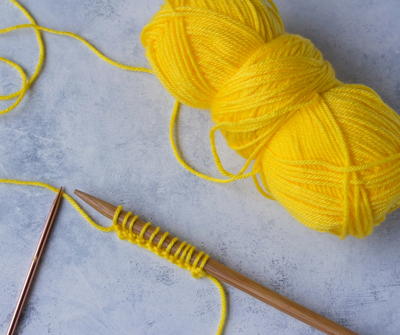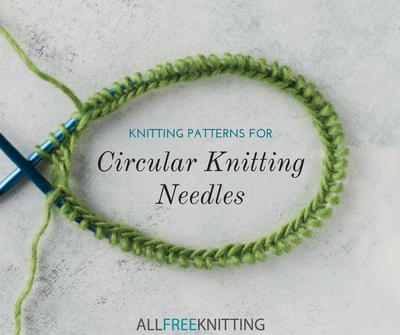6 Types of Knitting Decreases
From the k2tog to the SK2P, these knit decrease stitches are just what you need for your next project!

Whether you're knitting somethign advanced like a sweater or a shawl or something a little simpler like a hat or some socks, if you're knitting, you'll probably have to know how to decrease at some point. Decreasing and increasing in knitting simply refer to different techniques for changing the number of stitches in a row.
While there are tons of different types of decreases in knitting, the six different decreases below are the ones that you'll most likely encounter.
Some older knitting patterns will tell you to "decrease evenly" a certain number of stitches across a row but won't specify where those decreases go or which decrease to do. If you come across that in a pattern, it's good to know what your options are. Some decreases are discreet and almost invisible while others are more decorative. Do you need a single or double decrease? Should your decrease lean to the left or right?
Pro Tip:
To determine if a decrease stitch is left-leaning or right-leaning, all you have to do is look at the direction that your working needle is pointing when you start working that stitch.
For example, with the k2tog decrease, your working needle should be pointing to the right of your work; that indicates that the decreased stitch will appear on the right of the stitch used to create the decrease. The opposite is true for left-leaning increases like the SSK.
For more great projects like this, subscribe to our free email newsletter!
Knit Two Together (K2tog)
Lean: Right
Single or Double: Single
Difficulty: Easy
Notes: The k2tog is the most common (and often considered the easiest) single decrease in knitting. It's a fairly discreet decrease, and it's often paired with the SSK as a right-leaning alternative.
Slip, Slip, Knit (SSK)
Lean: Left
Single or Double: Single
Difficulty: Easy
Notes: Often paired with the k2tog, the SSK is very easy to work. While it is slightly more complicated than the k2tog, if you can bind off, you can work this decrease.
Slip, Slip, Purl (SSP)
Lean: Left
Single or Double: Single
Difficulty: Intermediate
Notes: While this decrease is a little more complicated than its RS counterpart, the SSK, it's still useful, especially for things like sweaters and hats. The hard part of this decrease to maneuver is the p2togtbl at the end, but once you've done it a few times, it's really a breeze.
Knit Three Together (K3tog)
Lean: Right
Single or Double: Double
Difficulty: Intermediate
Notes: If you can work a k2tog, you can do the k3tog! It's really just the double decrease version of the k2tog, which makes it great for just about any of your double decrease needs. From hats to scarves, the k3tog is the most common decrease you'll find for projects that require a steeper angle of decreasing.
Purl Three Together (P3tog)
Lean: Left
Single or Double: Double
Difficulty: Intermediate
Notes: The p3tog is simply the wrong side version of the k3tog. If you need to quadruple decrease but only have two rows to do this, you'll probably end up pairing the k3tog with the p3tog to accomplish this. Working the purl through all three loops of yarn is a little tricky at first, but once you've practiced, you'll find it's not as hard as you think.
Slip 1, K2tog, PSSO (SK2P)
Lean: Centered
Single or Double: Double
Difficulty: Advanced
Notes: The decrease version of the CDI (central double increase), this decrease is often found in shawls and occasionally sweaters. Because this decrease works evenly on both sides, you'll probably use it for things like decorative flowers and leaves and in the center of your shawls to have them decrease evenly.
















